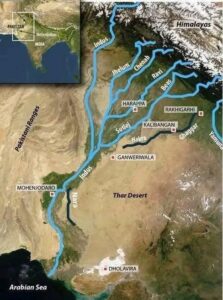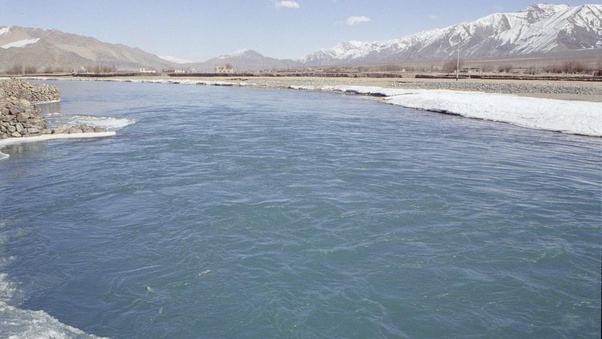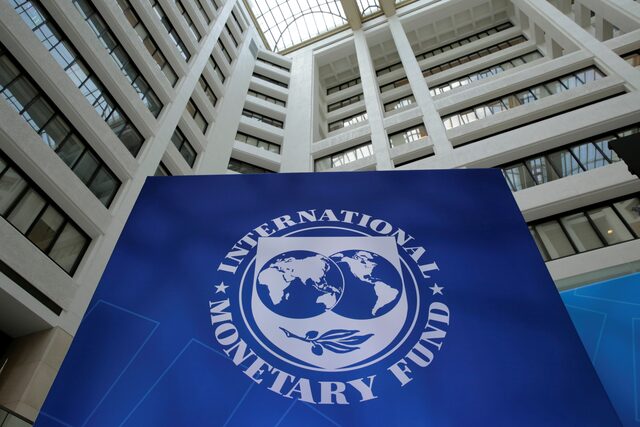INDUS WATER TREATY: A REVIEW
BLOOD & WATER CAN’T FLOW TOGETHER—By PM of INDIA
SARASIJ MAJUMDER

The Indus Waters Treaty (IWT) is the lifeline treaty for Pakistan, and if water is not made available to Pakistan by this TREATY, Pakistan will become a REGISTAN.
This treaty is 65 years old, and water to Pakistan was not stopped by India for a day, even when India and Pakistan fought 5 wars, including three major ones.
In 1960, India and Pakistan signed this treaty, with the World Bank playing some role. This treaty regulates the use and administration of the waters of six rivers in the Indus River Basin—essential lifelines for agriculture, drinking water, and hydroelectricity for Pakistan primarily, and also for the northwest part (Punjab, Kashmir, and Ladakh) of India`.
Post-Treaty Developments:
The treaty divided the three eastern rivers (Ravi, Beas, and Sutlej) totally for India and the three western rivers (Indus, Jhelum, and Chenab) for major use for Pakistan, who can use a maximum of up to 80% of the water from these three rivers. It also set up the Permanent Indus Commission for continuous cooperation and resolution of disputes.
Suspension of the Treaty in 2025
On April 23, 2025, India suspended the Indus Waters Treaty after a terrorist attack in the Baisaran Valley of Pahalgam, Jammu and Kashmir. India declared to stop (actually reduced by 10% at best) the flow of water from the western rivers to Pakistan and initiated various diplomatic and security actions, including shutting down the Attari border crossing for all traffic and requesting Pakistani nationals in India to depart within 48 hours.
IWT—TIME TABLE:
1947: Partition of British India, creating India and Pakistan; boundary drawn across Indus basin, causing water disputes.
On April 1, 1948, India begins withholding water from canals and rivers flowing into Pakistan after the expiration of the Standstill Agreement of 1947.
May 4, 1948: Inter-Dominion Accord. India agrees to supply water to Pakistan canals in return for annual payments (temporary measure).
1951: Pakistan approaches the United Nations. Accuses India of cutting water supply to Pakistani villages.
1951–1960: Negotiations under World Bank mediation. Nine years of talks facilitated by the World Bank led by President Eugene Black.
September 7, 1960: Washington Working Party meeting Final arrangements for publicity and signature of treaty discussed.
September 19, 1960: Indus Waters Treaty signed in Karachi. Signed by Indian PM Jawaharlal Nehru, Pakistani President Ayub Khan, and World Bank VP William Illiff.
April 1, 1960: Treaty effective date The treaty’s effective date precedes the signing date.
1960–1970: Transition period. India supplies water from eastern rivers to Pakistan until Pakistan builds a canal system for western rivers.
1965: Indo-Pak War Water supply to Pakistan under treaty not interrupted despite conflict.
Post-1960: Permanent Indus Commission established. Commissioners from both countries meet annually for dispute resolution and cooperation.
April 23, 2025: India suspends the Indus Waters Treaty following a terrorist attack in Jammu and Kashmir, India, and reduces, as much as possible, water flow to Pakistan and downgrades diplomatic ties.
The above timeline tracks the history of the Indus Waters Treaty, from its origin amid partition-induced disputes, through negotiation and implementation, to its recent suspension in 2025.
Halt of Water Flow to Pakistan
Using presently available infrastructure, India could, and has, stopped partially the water flow from the western rivers—Indus, Jhelum, and Chenab—into Pakistan, a major change in water-sharing after 64 years of cooperation under the treaty. It may be flowing about 70% from 80% agreement—my estimate.
China Comes In Support Of Pakistan:
Notably, the Mohmand Dam is part of the Mohmand Hydropower Project on the Swat River. It has been built by China Energy Engineering Corporation since 2019. Also, it should be noted that the project was initially scheduled for completion next year, 2026. But it is now fast-tracked due to Pakistan’s possible water shortage issues soon, a propaganda report by China’s state broadcaster CCTV said.
“This dam construction will prove to be a milestone for Pakistan’s major national projects, which are progressing at a rapid pace,” Pakistan’s state broadcaster said while reporting this incident.
Implications of IWT Suspension for Pakistan:
The treaty’s suspension will have the following consequences for Pakistan, as listed below:
1.0 Water Dependency: Pakistan receives nearly 80% of Indus water flow, crucial for agriculture, irrigation, power generation, and drinking water for Punjab and Sindh. Major cities like Karachi, Lahore, and Multan depend directly on these rivers for daily water needs.
2.0 Agricultural Economy: Agriculture contributes 23% to GDP and supports 68% of the rural population, relying on 93% of water for irrigation. The Indus basin delivers around 154.3 million acre-feet of water annually, essential for food security and farming. This river is the irrigation backbone for Pakistan.
3.0 Economic Impact: Disruption in water flow can lower crop production, increase food scarcity, and strain rural economies.
4.0 Existing Water Crisis: Pakistan already struggles with groundwater depletion, soil salinity, and weak water storage infrastructure.
5.0 Limited Storage: Reservoirs like Mangla and Tarbela together hold only 14.4 million acre-feet—just 10% of the annual allocation. The major part flows to the sea.
6.0 Loss of Security: Suspension of IWT removes guaranteed water supply, worsening water management challenges and national vulnerability.
7.0 Maintaining and producing nuclear assets requires a large amount of water.
Advantages of India:
The implications for India following the revoking of the Indus Waters Treaty are significant. India now enjoys greater control with flexibility over the western rivers—Jhelum, Chenab, and Indus—enabling increased flexibility in water usage, hydropower generation, and flood control. These developments mark a shift in regional water-sharing dynamics, reducing Pakistan’s oversight and potentially impacting bilateral relations.
Hydropower Generation: Potential for increased hydropower generation got enhanced.
Flood Control and Water Storage: The ability to undertake flood control measures and mitigate floods in the Kashmir Valley increased. No restriction on storage in reservoirs on western rivers, particularly the Jhelum.
No Obligation to Share Flood Data: India may stop sharing flood data with Pakistan, affecting Pakistan’s flood preparedness, particularly during the monsoon season.
Suspension of Site Visits: India can deny access to Pakistani officials seeking to inspect Indian hydro projects, which were earlier mandated under the treaty’s provisions.
Limited Immediate Impact: Despite these expanded powers, the short-term impact is minimal because India currently lacks adequate infrastructure to halt or divert river flows effectively.
LEGAL OPTIONS:
IWT is not governed by the law of treaties, primarily codified in the Vienna Convention on the Law of Treaties, which came into being in 1969. The involvement of WORD BANK as a signatory was in the form of a mere ‘FACILITATOR’—as clearly stated recently by the present president of WoBa and reported by HT.
The suspension will not have an immediate impact on the flow of water to Pakistan for a few years at least. India does not currently have the infrastructure to either stop the flow of water into Pakistan or to divert it completely for its own use. At most, India can reduce water flows by 5-10% using present infrastructure.
Under the Indus Waters Treaty, India has full rights over the water of the Ravi, Sutlej, and Beas, while Pakistan has major rights of share over the water of the Indus, Jhelum, and Chenab.
But it took India 45 years to stop the flow of water from the Ravi River into Pakistan by building a dam. Finally, the flow of Ravi water into Pakistan got stopped in 2024. The Shahpur Kandi Barrage—located in Punjab’s Pathankot district—was held up by a domestic dispute between Jammu & Kashmir and Punjab. That led to a substantial chunk of water that belonged to India going to Pakistan all these years. I presume the prolonged dispute was a handiwork of PAKISTAN involving Kashmir’s ABDULLA-MUFTI & Co. The Indian judiciary did the rest.
The treaty (NOW SUSPENDED) restricted India from building reservoirs/barrages/dams on the Indus, Jhelum, and Chenab rivers. India could, however, develop hydroelectric “run-of-the-river” projects. This means that the projects couldn’t alter the flow of water or obstruct it.
Suspending the treaty means India will not adhere to these restrictions and will begin constructing reservoirs, barrages, and dams to plug water flow to Pakistan.
However, building those INFRASTRUCTURES on these rivers will take years, if not a decade. It would require extensive surveys and funding for such a thing to fructify, considering the ecological impact. But—INDIA had all the resources to do this. Only acquiring land will take some time.
Thus, at this point, India’s move is more a pressure tactic on Pakistan to rein in terror groups and stop illegal infiltration.
Can Pakistan trigger any arbitration clause under the IWT in response to India’s decision to suspend the treaty? Let us examine it in detail.
THE INDUS WATERS TREATY LACKS AN EXIT CLAUSE. The treaty has no end date, and any modification requires the consent of both parties. India sent a notice to review this TREATY to Pakistan about a year ago. It was not responded to.
A former Pakistani federal law minister, Ahmer Bilal Soofi, had once said that arbitration may not offer much recourse if India chooses not to follow the treaty.
“In case India ‘revokes’ the treaty, it literally means it has shunned it. The dispute resolution mechanism under Article IX and Annexes F & G of the IWT will be of no use and assistance to Pakistan. It is limited to a dispute under the treaty and not meant to provide for specific performance of the treaty itself.”
“Since there is no provision in the IWT about its duration or suspension, there is no avenue that Pakistan can approach for ‘revival’ of the treaty. Nor can Pakistan approach the International Court of Justice seeking specific performance to implement the treaty because of the Indian reservation given under the ICJ statute that bars the filing of a case by Pakistan against India. In other words, Pakistan will not be left with any peaceful mechanism for seeking performance of the treaty by India,” Soofi has said.
That is, in my opinion, also.
Further—by ‘SIMLA AGREEMENT’—both agreed to solve all bilateral disputes mutually. Pakistan had declared that ‘NULL & VOID.’ Hence no avenue is open now to discuss this.
Future Challenges for India:
- Water Resource Development:
India will have to solve challenges in expanding available storage by building dams, barrages, and hydroelectric projects on the western rivers, which involves technical, environmental, and regional political considerations. - Regional Water Diplomacy:
The suspension may affect India’s relations with other regional stakeholders outside India, but excluding Pakistan. This aspect is not studied. - Ensuring Sustainable Water Use:
India will need to ensure that water use in Jammu and Kashmir and Ladakh remains sustainable, especially given the ecological sensitivity of these regions. - WHAT EMERGES:
- The suspension of the Indus Water Treaty signals a strategic shift in India’s posture, linking water diplomacy to national security imperatives. What was once a framework for peace is now being re-evaluated in light of persistent cross-border terrorism, marking a turning point in regional geopolitics.
- DISCLAIMER: This is a non-commercial BLOG, posted for information only. No sensitive information is shared. All information is available in the public domain.
- References:
- 1.0 The United Nations:– Treaty Series: No. 6032.
- 2.0 https://www.internationalwaterlaw.org/documents/regionaldocs/IndusWatersTreaty1960.pdf
- 3.0 https://www.mea.gov.in/bilateral-documents.htm?dtl/6439/Indus
- 4.0 https://www.thirdworldcentre.org/wp-content/uploads/2015/05/induswattreaty.pdf
- 5.0 https://www.worldbank.org/en/region/sar/brief/fact-sheet-the-indus-waters-treaty-1960-and-the-world-bank
- 6.0 Other historical documents & pieces of information available in the public domain.








